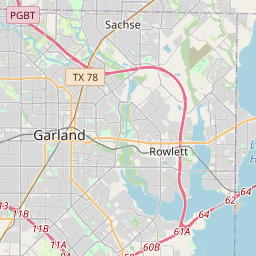Fate Presbyterian Church
Historical marker location:






When Presbyterians organized this congregation in the middle 1880s, the community of Fate was developing as a new settlement on the Missouri, Kansas and Texas Railroad. Among the eighteen individuals who chartered the church were members of the Leonard, Kale, McLendon, Cooper, Wilson, Bonsel, Morgan, Holiday, and Sawyer families.
In the early years, a circuit rider served as minister of this and other area churches. One early circuit rider was the Rev. J. A. Hornbeak (d. 1939), who was serving as minister of the Fate Presbyterian Church in 1894 when the members constructed the first sanctuary. Located on Brown Street, it was built under the supervision of head carpenter H. A. Kale (1834-1921), a charter member of the congregation. The church continued to worship in the structure until the early 1920s. In 1926, a new church building was completed at this site.
With historic ties to the earliest days of the Fate community, the Fate Presbyterian Church remains an important institution in Rockwall County. Church members have included many community leaders and pioneer area settlers.
Texas Sesquicentennial 1836-1986
As one of the most visible programs of the Texas Historical Commission (THC), historical markers commemorate diverse topics in Texas history, including: the history and architecture of houses, commercial and public buildings, religious congregations, and military sites; events that changed the course of local and state history; and individuals who have made lasting contributions to the state, community organizations, and businesses.
More history nearby
The Texas Rangers, a famous law enforcement agency, were first organized in 1835 to protect settlers from Native American attacks.
In its early years, Rockwall County primarily relied on agriculture, with cotton being a significant crop. The arrival of the railroad in the late 1800s helped stimulate economic growth and opened up opportunities for trade and transportation. As the area developed further, it attracted new residents and businesses, bringing both prosperity and expansion.
Throughout the 20th century, Rockwall County continued to evolve with changing industries and demographics. The construction of Lake Ray Hubbard in the 1960s not only provided a new recreational area but also fueled the growth of tourism and real estate development in the region. Today, Rockwall County is known for its thriving local economy, excellent schools, and high quality of life.
The county has also seen significant population growth over the years, as more and more people are drawn to its close proximity to Dallas and its beautiful natural surroundings. Despite its growth, Rockwall County has managed to maintain its small-town charm and community-oriented atmosphere, making it an attractive place for families and businesses alike.
Rockwall County Timeline
This timeline provides a condensed summary of the historical journey of Rockwall County, Texas.
- 1846 - Rockwall County is established as one of the original 23 counties in the state of Texas.
- 1851 - The town of Rockwall is founded, becoming the county seat.
- 1873 - The arrival of the railroad brings growth and economic development to the county.
- 1895 - Rockwall County experiences a devastating tornado that causes significant damage and loss of life.
- 1920s - The advent of oil drilling in the area leads to increased economic prosperity.
- 1973 - Lake Ray Hubbard is impounded, providing a new recreational and water supply resource for the county.
- 1980s - The county experiences rapid population growth and suburbanization as people move to the Dallas-Fort Worth metropolitan area.
- 2008 - The Harbor at Rockwall, a mixed-use development, opens on the shores of Lake Ray Hubbard, becoming a popular destination for shopping, dining, and entertainment.